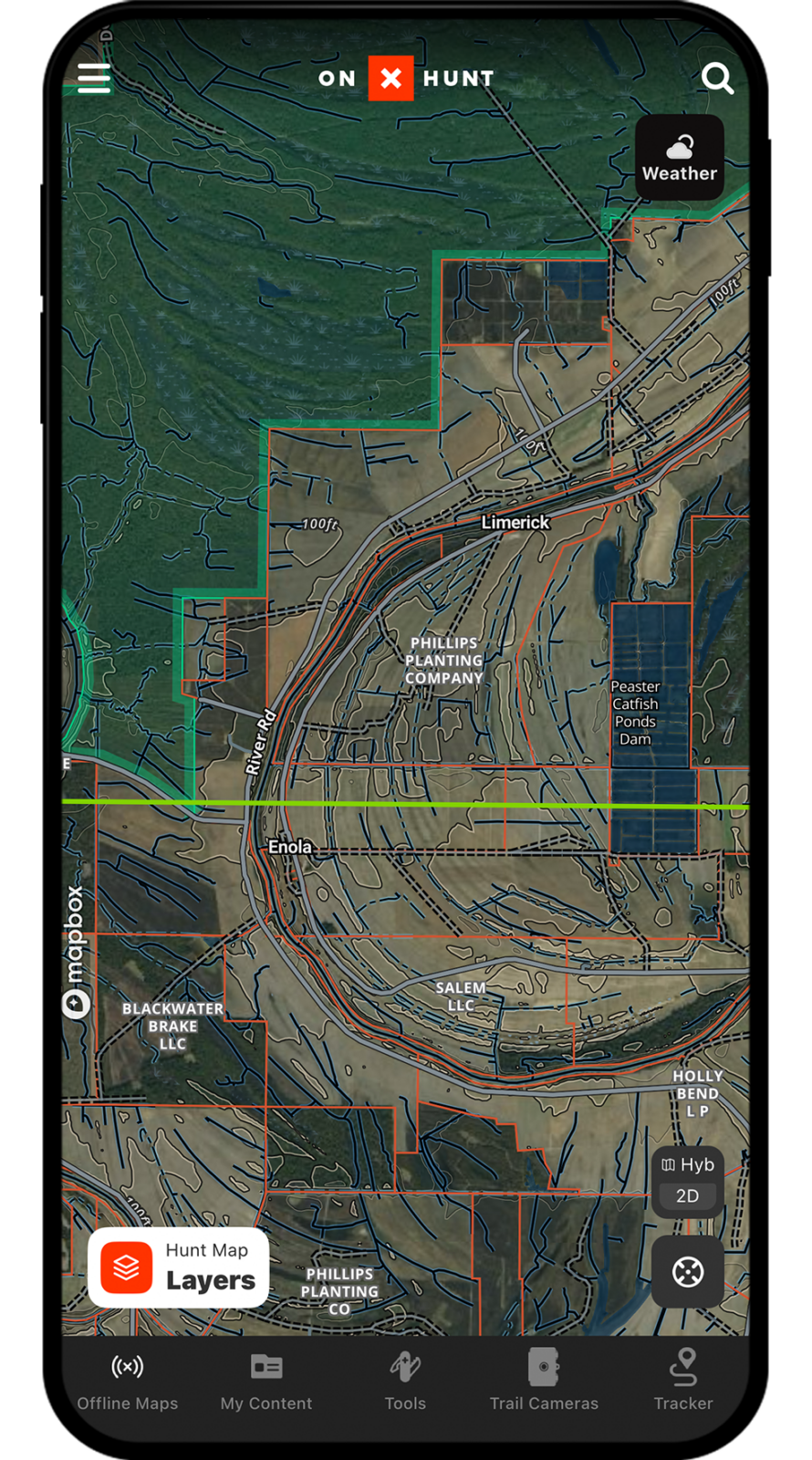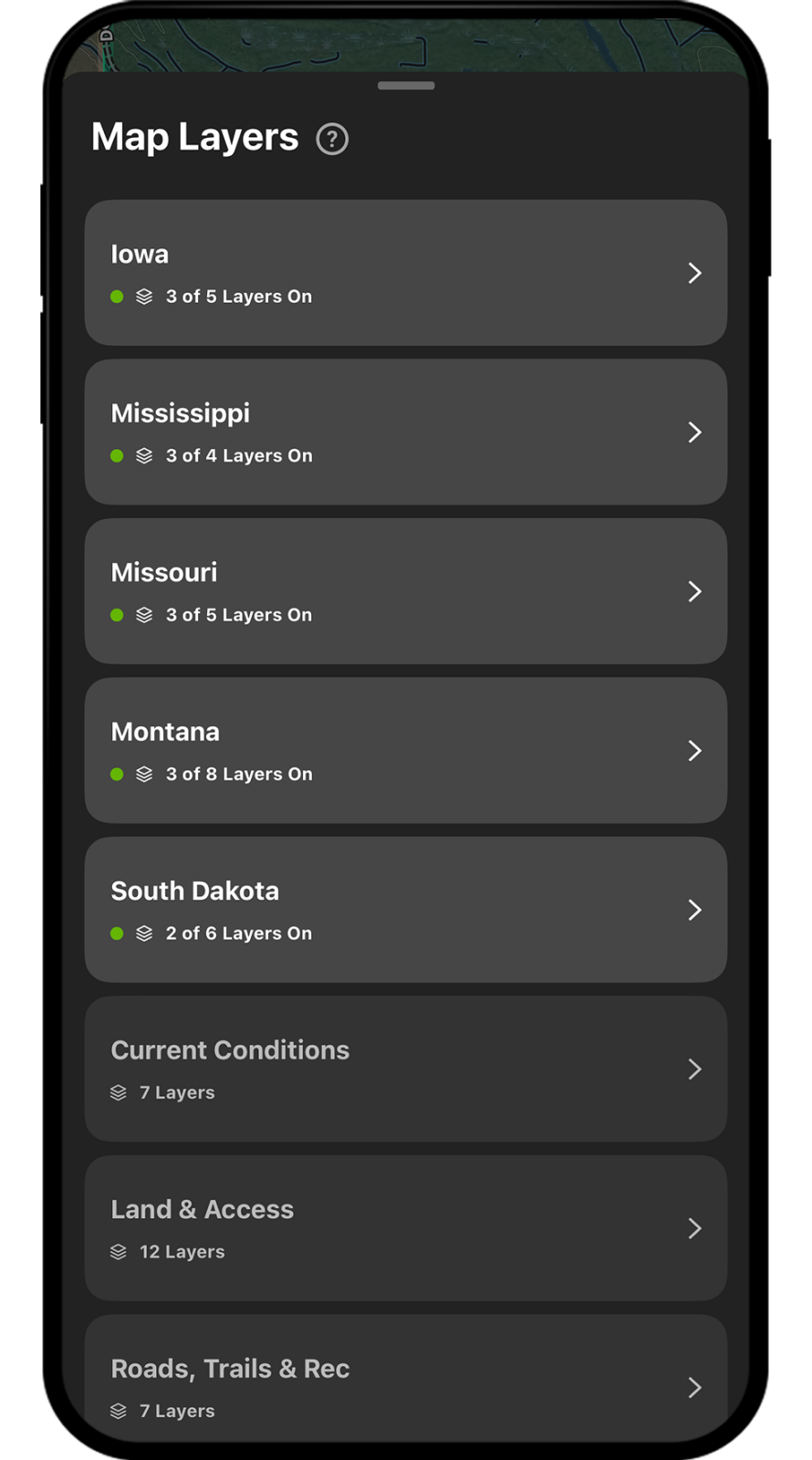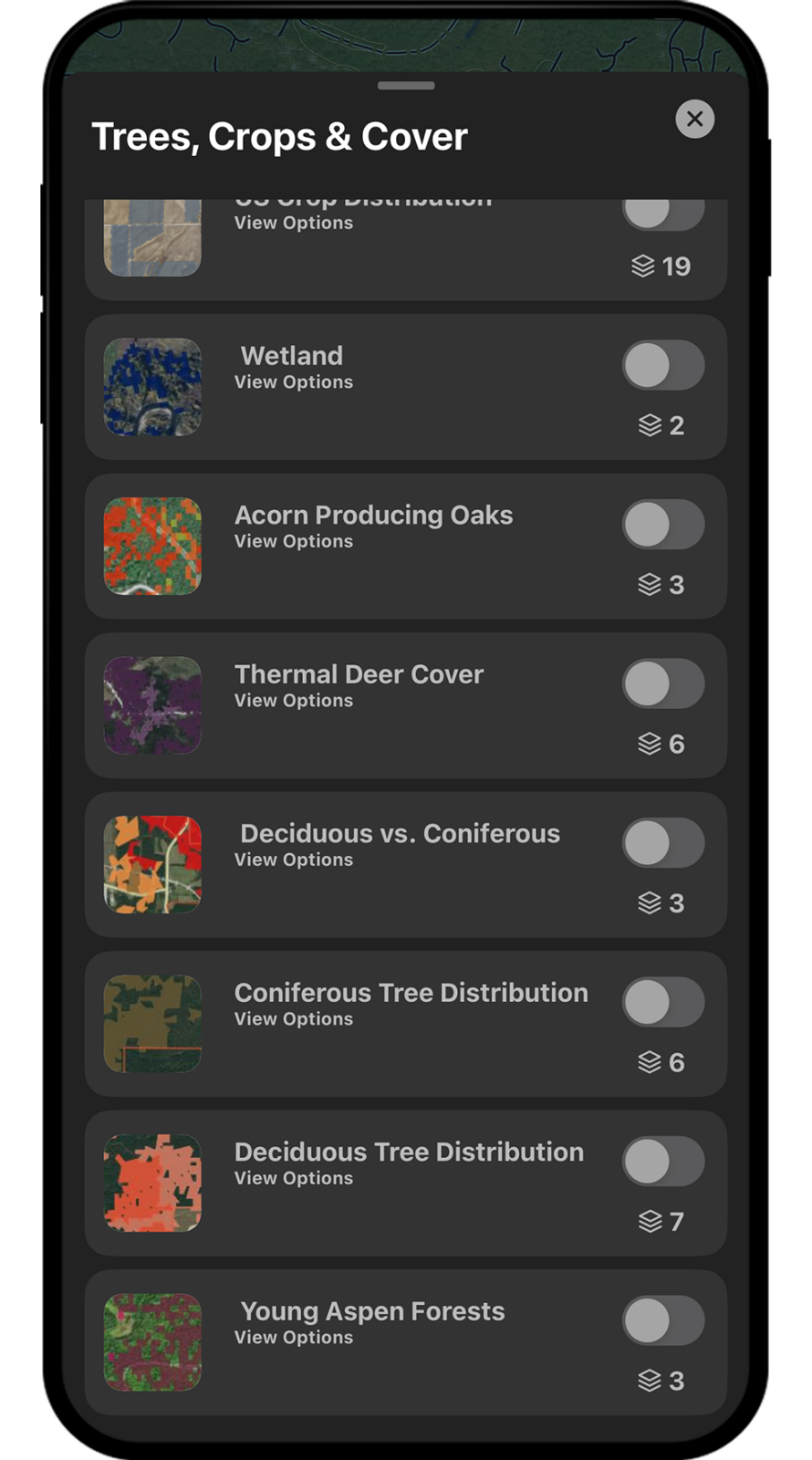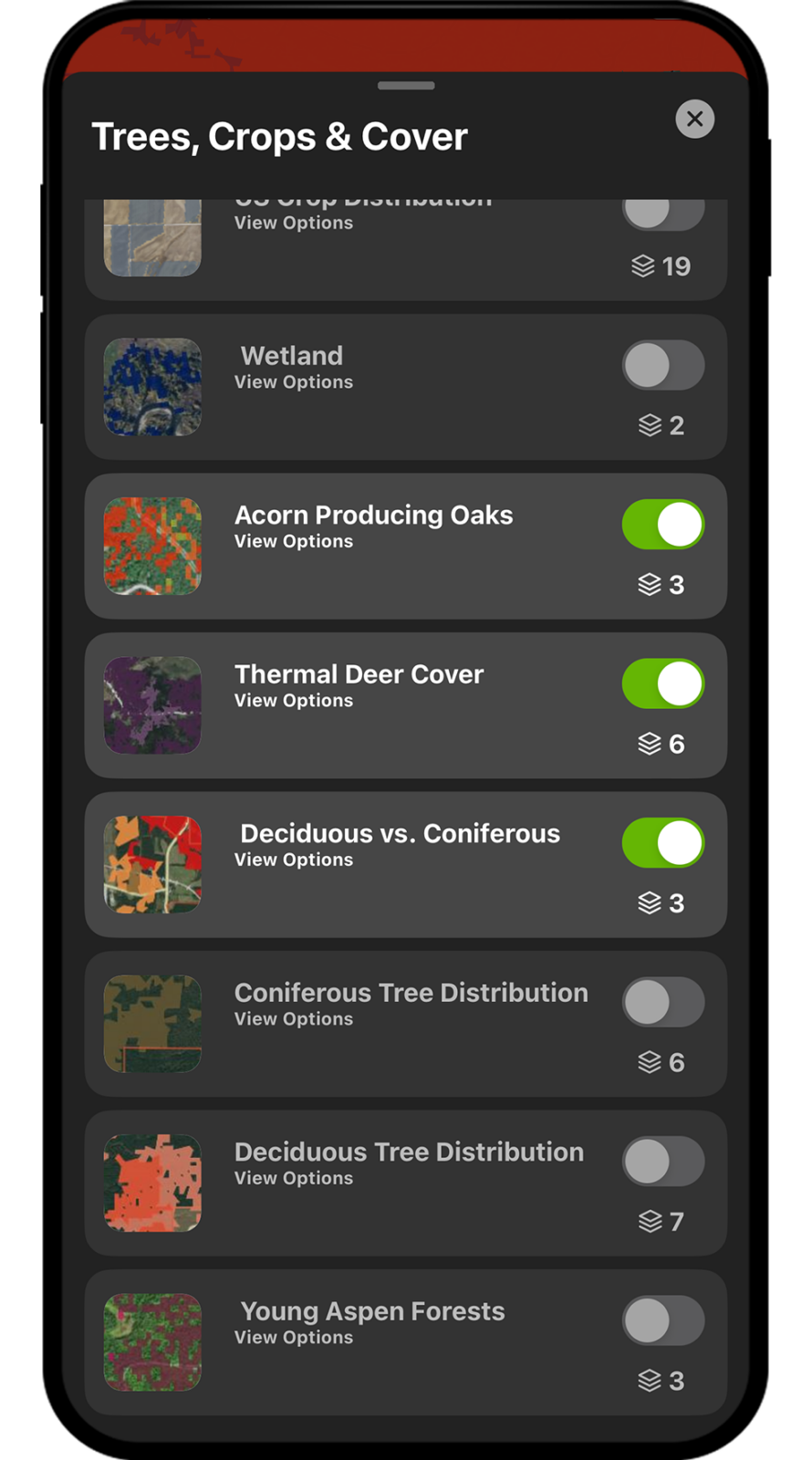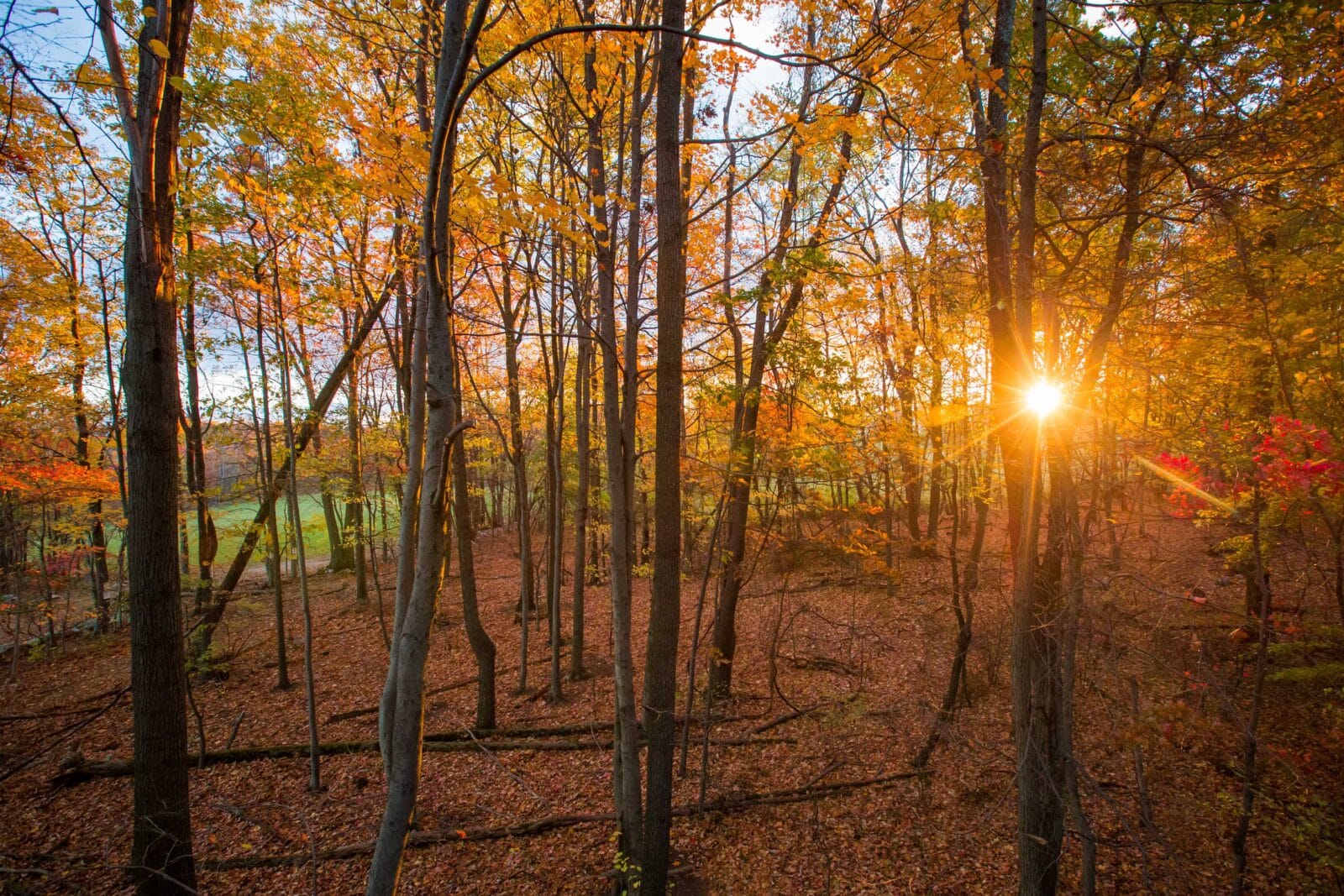
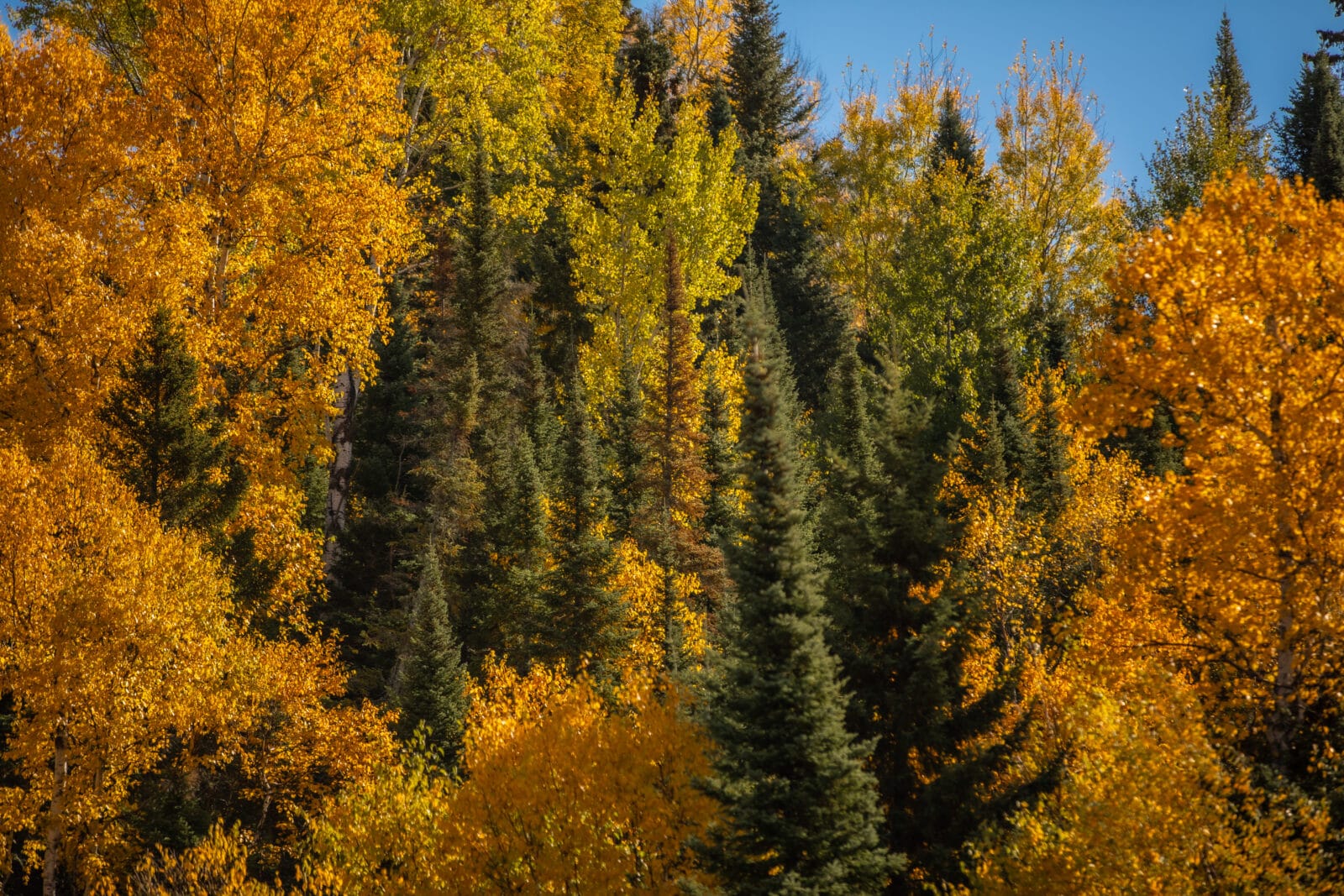
Tree Species Data
Understanding forest compositions is one of the most important aspects of any hunt, but it’s also historically one of the hardest things to scout using traditional aerial imagery maps. onX wanted to solve this problem for hunters and provide a new mapping solution that allows you to evaluate forest composition including forest diversity, tree species, and other habitat types such as wetlands. We’re excited to launch our first round of these map Layers and will be adding more as we analyze additional data and take your feedback into consideration.
First, let’s cover how to use these Layers:
- This data covers the lower 48 states and was analyzed using satellite imagery analysis, which is well-suited for general trends and broad landscape study. While it can be used for micro-analysis, the accuracy can be questionable if you are looking at just one pixel. (A pixel is defined by each square you see on the map, which represents a 30-yard x 30-yard area.)
- Each pixel represents the major or dominant tree species and age in that pixel. It doesn’t mean other species aren’t present; in general, it means this is the predominant forest type and species for this pixel.
- Use these Layers to get a general analysis of what types of trees are present on the property or area you’re scouting. Is this acreage made up of 30% pine trees? Does this property have maple and oak forests?
- Find habitat diversity between forest types, which often funnels or concentrates game due to ease of travel, transition zones, and diversity in food sources.
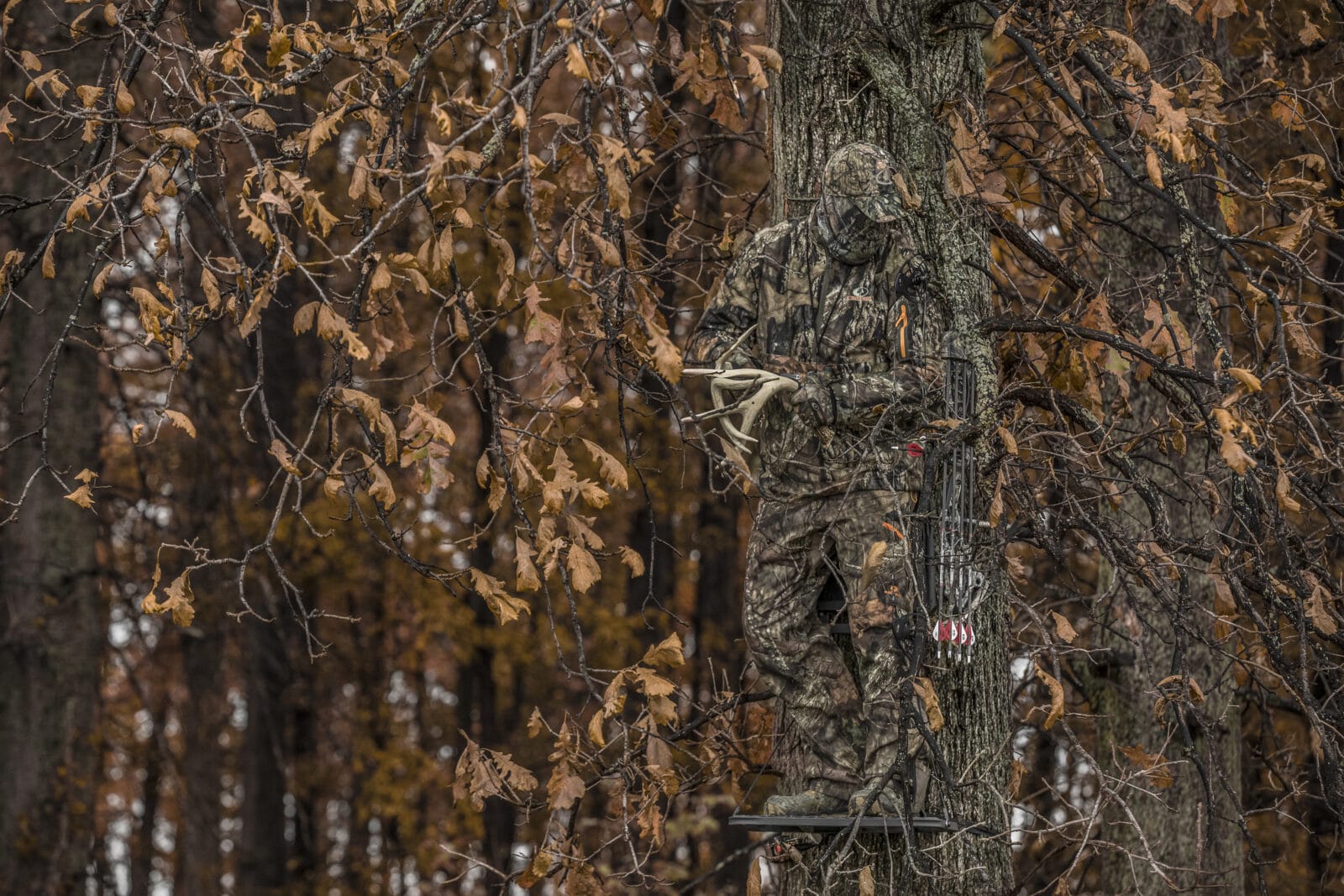
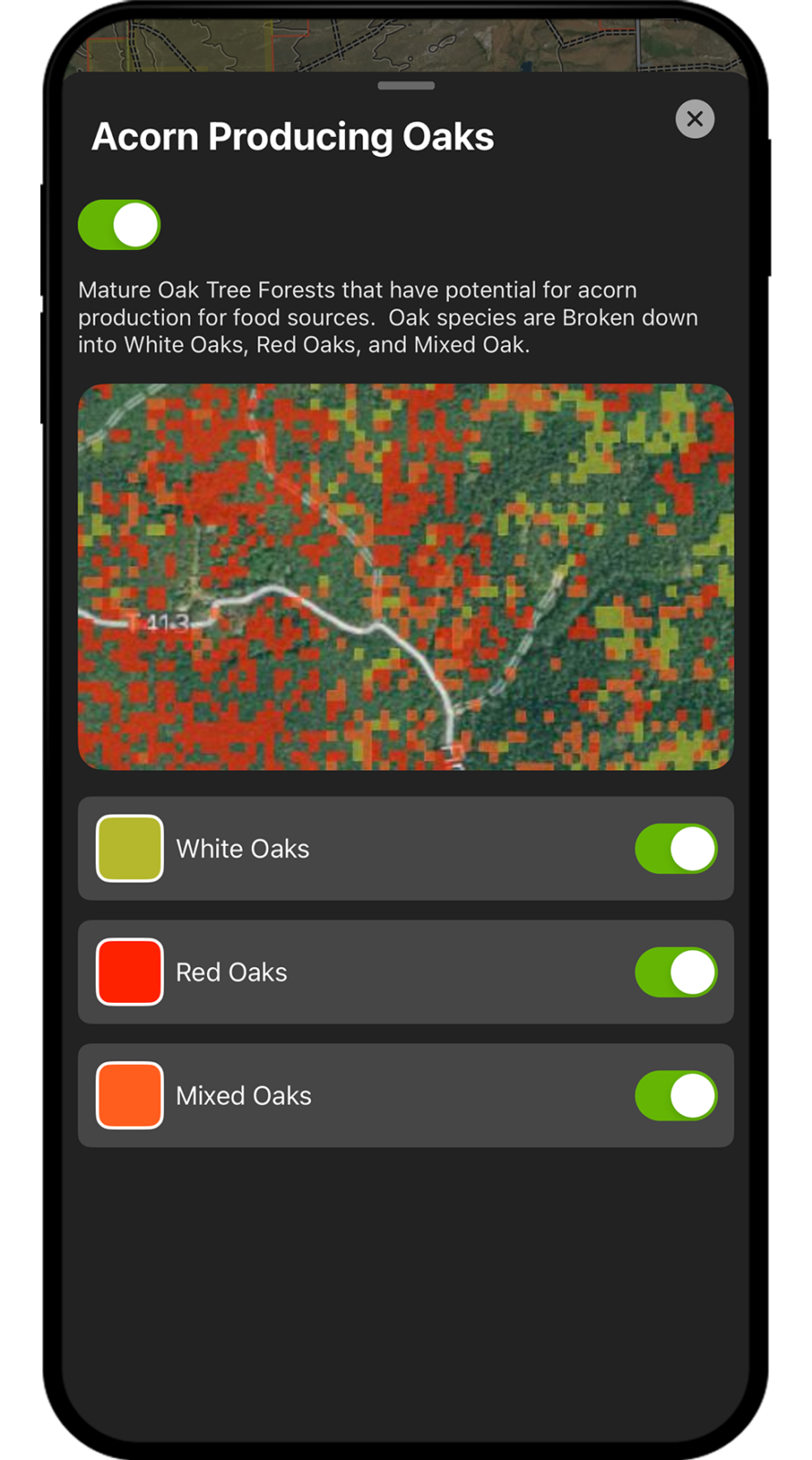
Acorn-Producing Oaks
No matter what part of the country you call home, oak trees are a favorite food source for many different species. During certain times of the year, it pays to forget about food plots and find mast-producing oak trees for fast action. Our map shows the locations of mature white oaks, red oaks, or mixed oak forest on the landscape. In the deer woods, understanding when certain oaks are dropping acorns can be a key strategy to make your scouting time more efficient and put you on whitetails. For instance, it may do little good to scout white oaks in early season if only pin oaks are falling. Or, in mid-season, if white oaks are falling nearby, deer will favor them over red oak species due to having a “sweeter taste” which is due to lower tannin levels in these acorns. In late season, you may focus on red oaks predominantly as these acorns last longer on the ground than white oaks due to higher tannin levels. Some red oaks in the deep south won’t even drop until December. Finding these trees dropping close to bedding is as close to a sure thing as you will find.
The Acorn-Producing Oaks Layer has a white/orange/red color scheme with three sublayers that can be turned on and off individually. Sublayers include Red Oaks, White Oaks, and Mixed Oaks, allowing you to toggle layers on and off to find the type of oak trees you’re interested in.
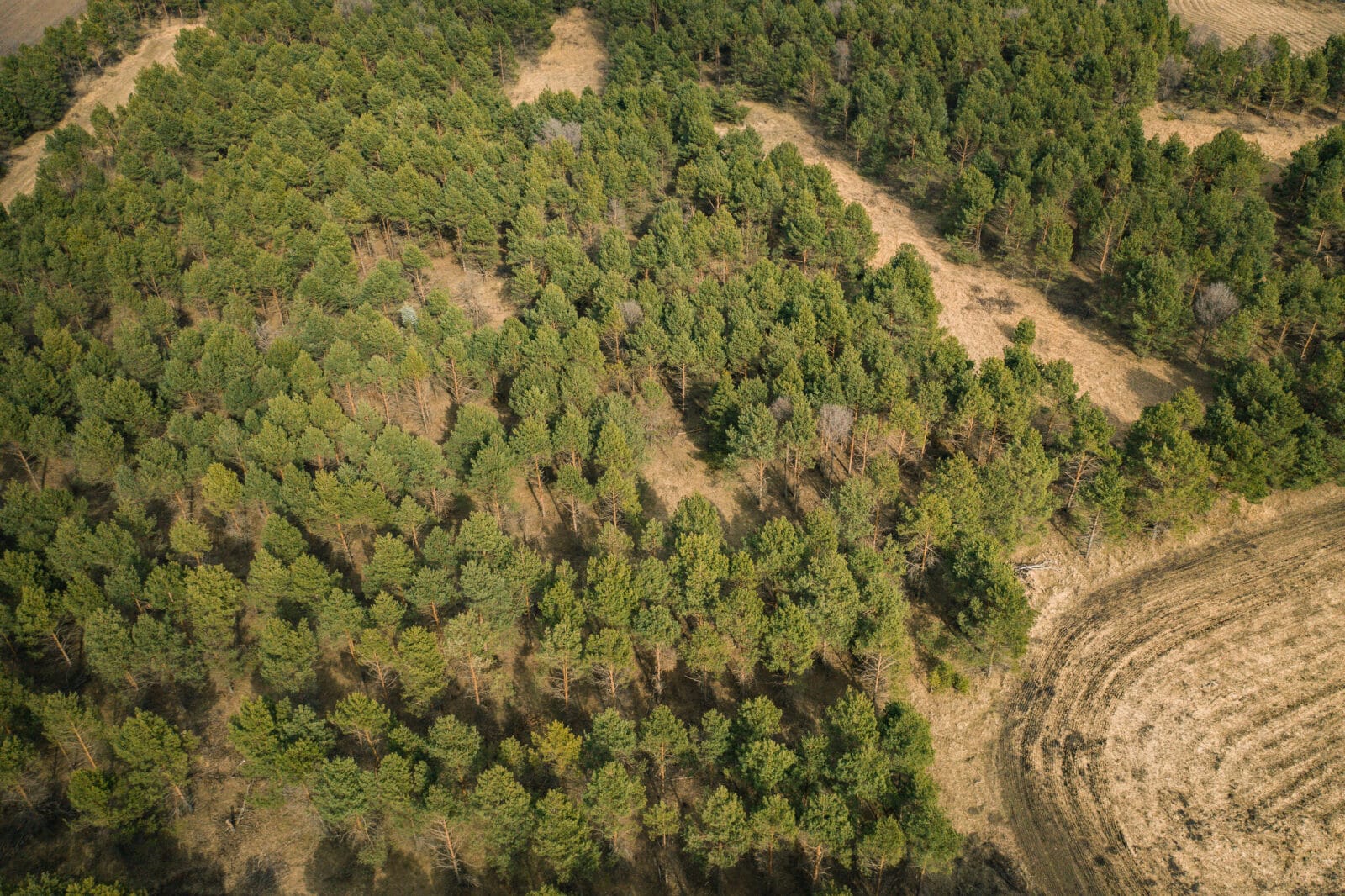
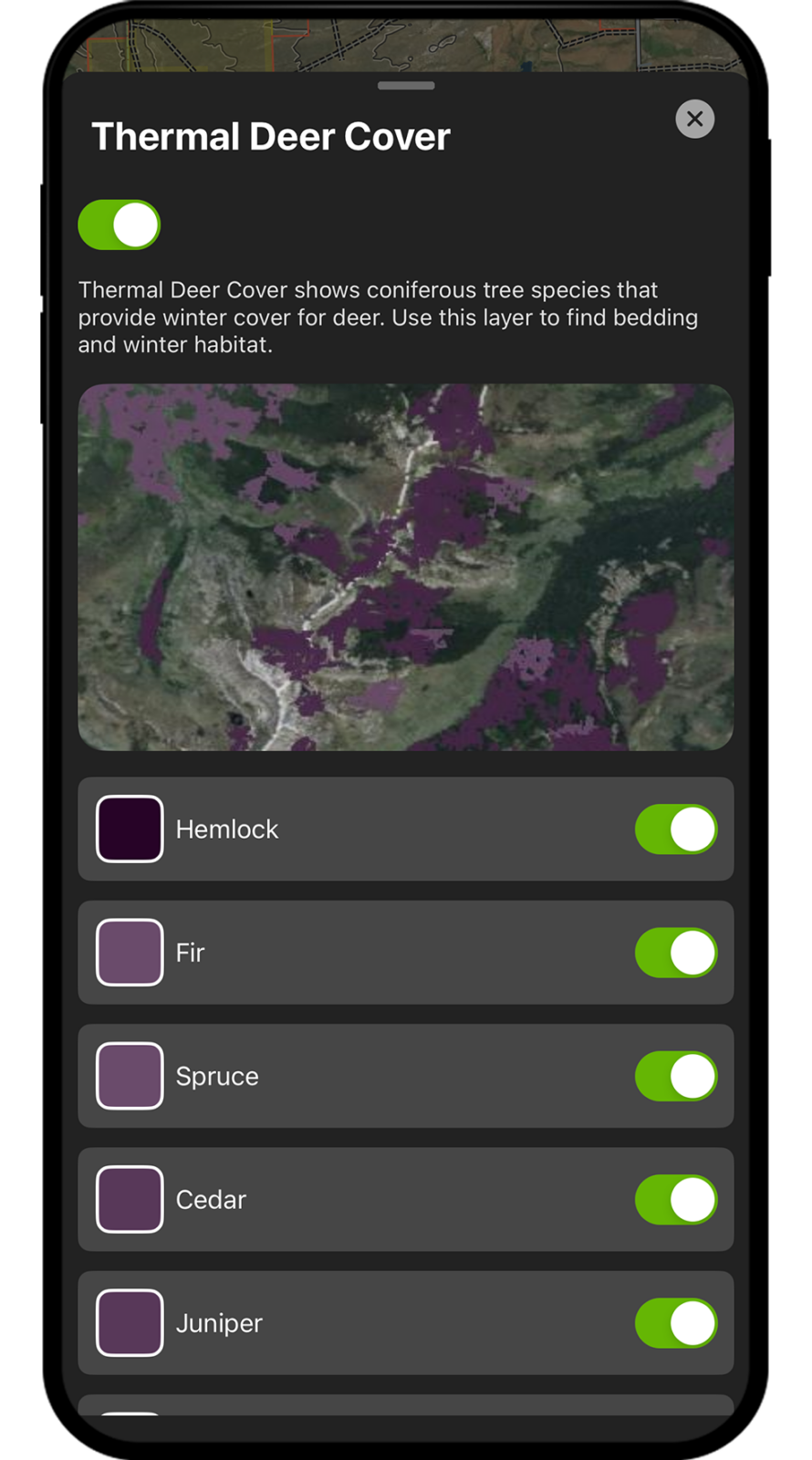
Thermal Deer Cover
When temperatures dip and snow starts falling, deer key in on specific sheltered areas for bedding. Quality winter habitat includes a canopy closure of 70+ percent; coverage is often provided by coniferous species such as hemlock, fir, or cedar. These species offer a barrier to wind and snowfall, providing deer with a winter sanctuary that provides warmth, protection from the elements, and secure cover.
The Thermal Deer Cover Layer has a purple color scheme with six sublayers that can be turned on and off individually. Sublayers include hemlock, fir, spruce, cedar, juniper, and redwoods. If you want to just highlight a certain species, you can turn off the sublayers you’re not interested in.
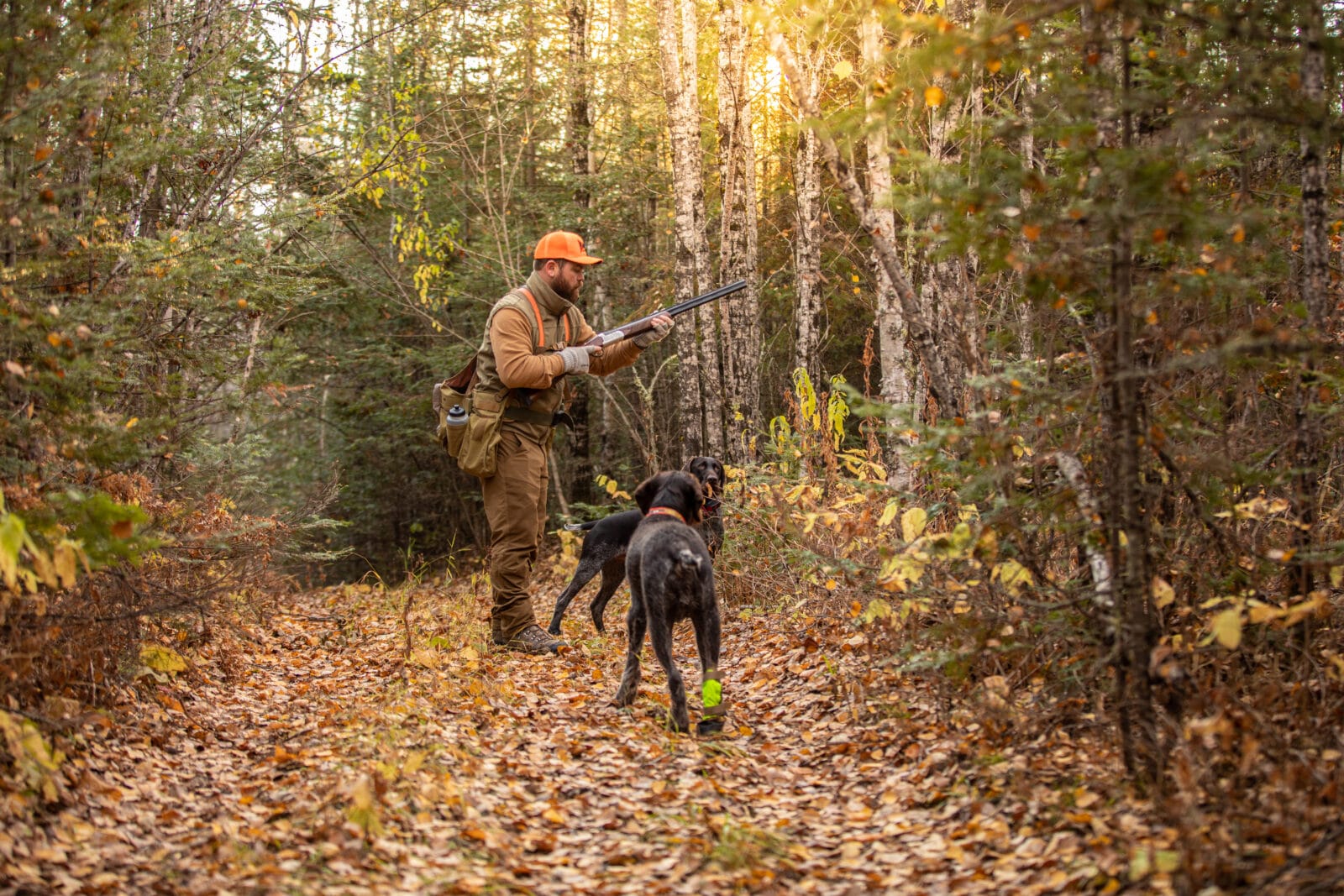
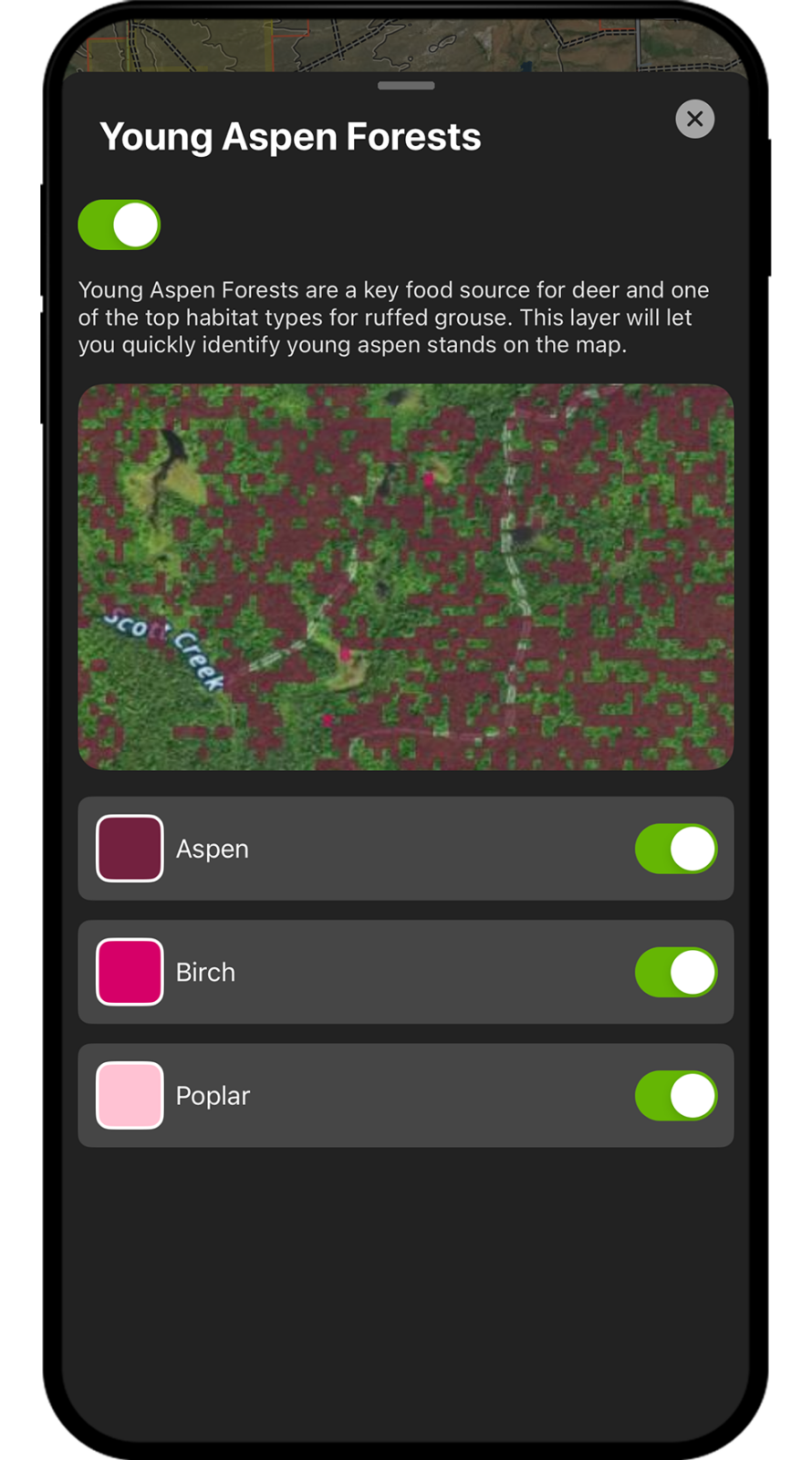
Young Aspen Forests
For grouse and woodcock hunters, it’s almost guaranteed one of your favorite covers includes an aspen stand. These young stands provide the dense cover needed for hens to nest and raise broods in the spring and summer, with a thick canopy protecting them from avian predators. Through the fall and winter, grouse depend on catkins produced by the aspens. The key age range for aspen forests to hold grouse is from five to 15 years old. As these forests age, they become less desirable habitat for grouse.
The Young Aspen Forests Layer has a maroon color scheme with three sublayers that can be turned on and off individually. Sublayers include aspen, birch, and poplar. This Layer shows forests in the stand initiation phase, which is typically tree diameters around 0-5 inches.
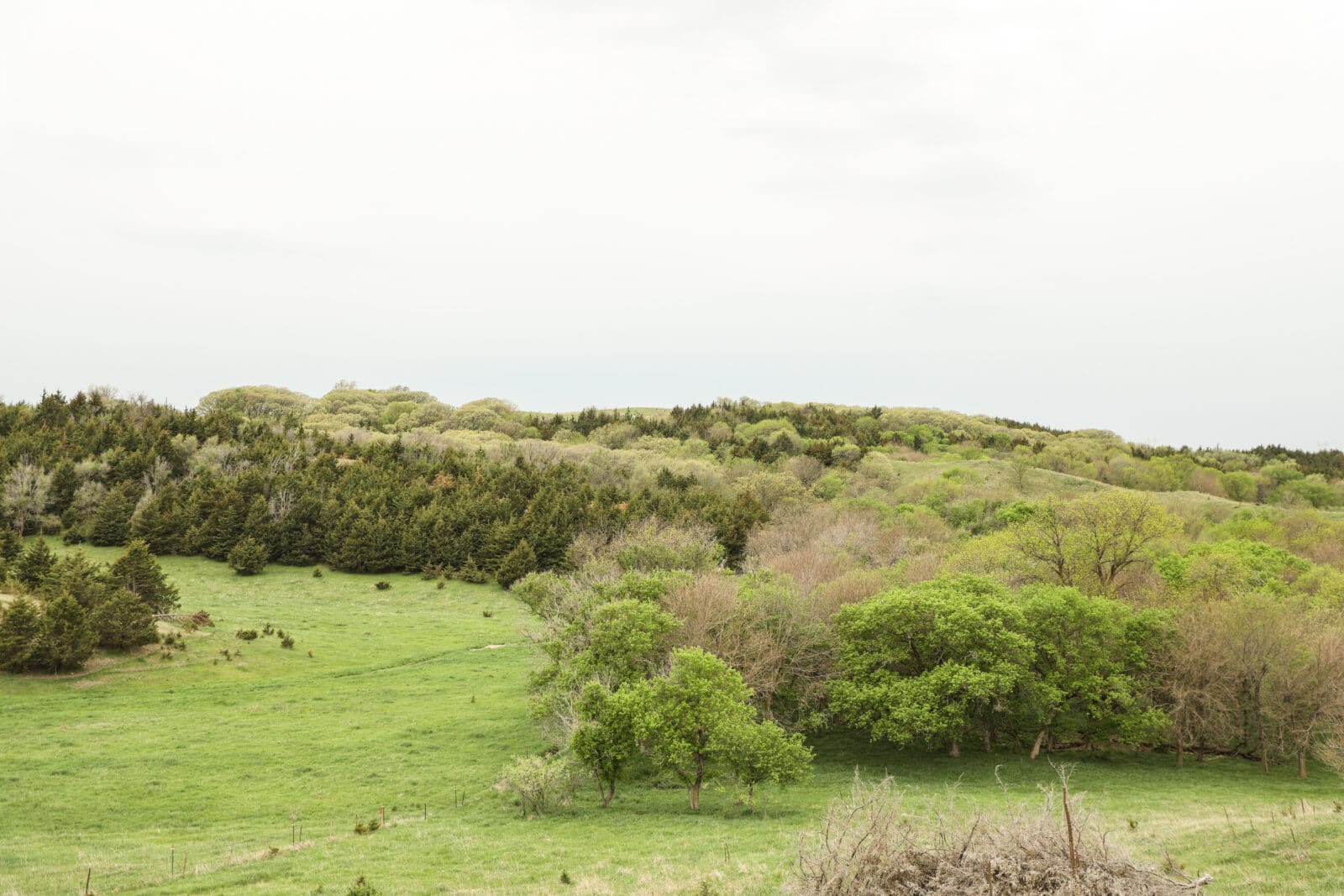
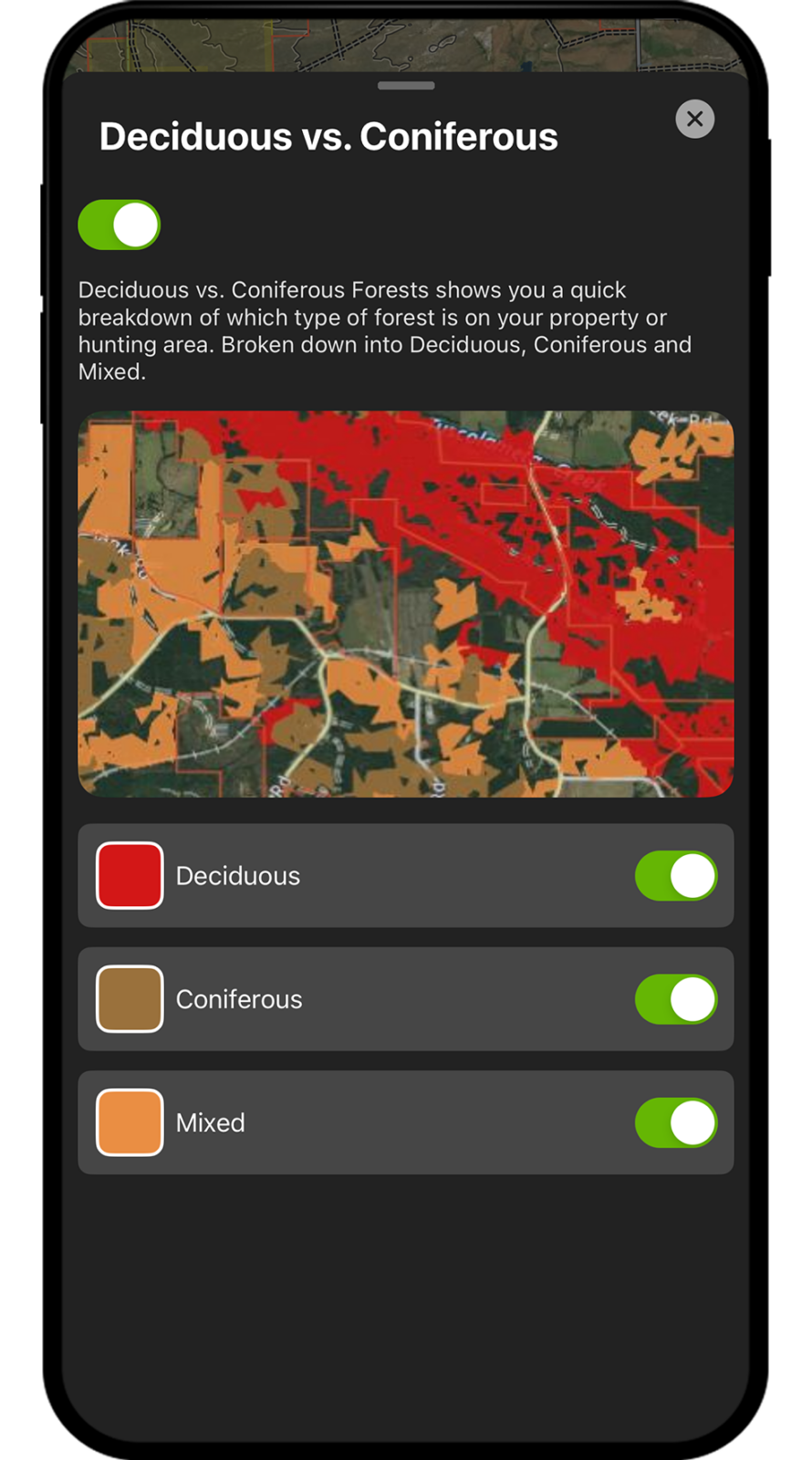
Deciduous vs. Coniferous Forests
Have you ever looked at aerial imagery and wondered what kind of trees you’re looking at? Knowing that difference and finding this edge habitat can be key to planning where your next tree stand should be located. With the Deciduous vs. Coniferous Layer, you can quickly get a bird’s-eye view of the type of forest on the property you’re studying. Use this information to find transition zones between forest types that may provide natural funnels for wildlife.
The Deciduous vs. Coniferous Forests Layer has three sublayers that can be turned on and off individually. Sublayers include deciduous forests in red, coniferous forests in brown, and mixed forests in orange.
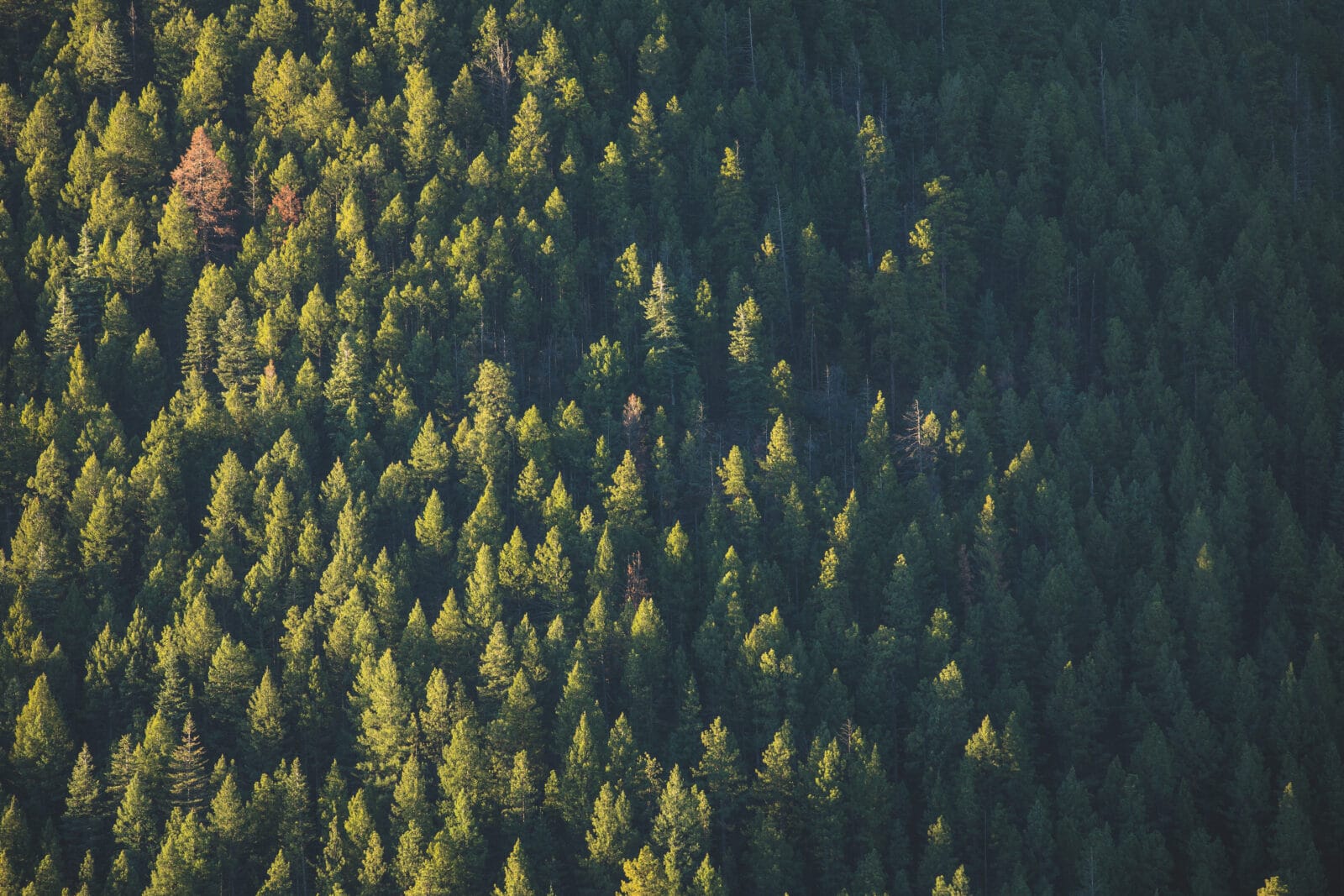

Coniferous Tree Distribution
Use this Layer to deepen your understanding of the specific species and family of coniferous trees on the map. If you want to find longleaf pine or spruce forest, you can easily view just those types of trees by going to Layer settings. Based on the species, time of year, and region you’re hunting, you may want to highlight certain coniferous tree types to better target your game species. You may also want to view where a forest transitions from one type of tree to another, which can often cause a change in habitat structure and work to funnel animals through these zones.
The Coniferous Tree Distribution Layer has six sublayers that can be turned on and off individually. These sublayers are in a brown color scheme with subtle differences in the brown color for each layer and include pine, fir/hemlock/spruce, juniper, larch/tamarack, longleaf pine, and other softwoods.
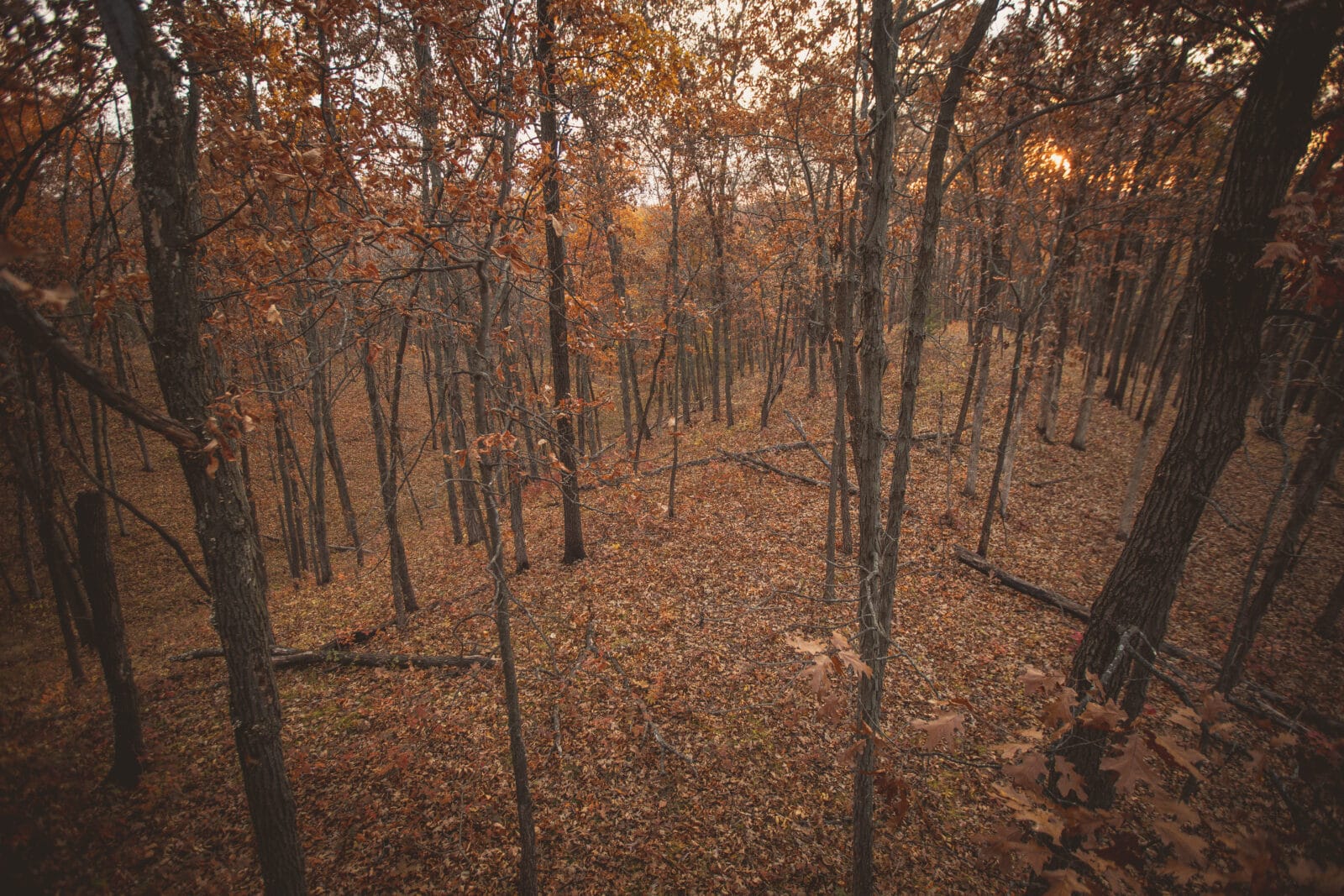
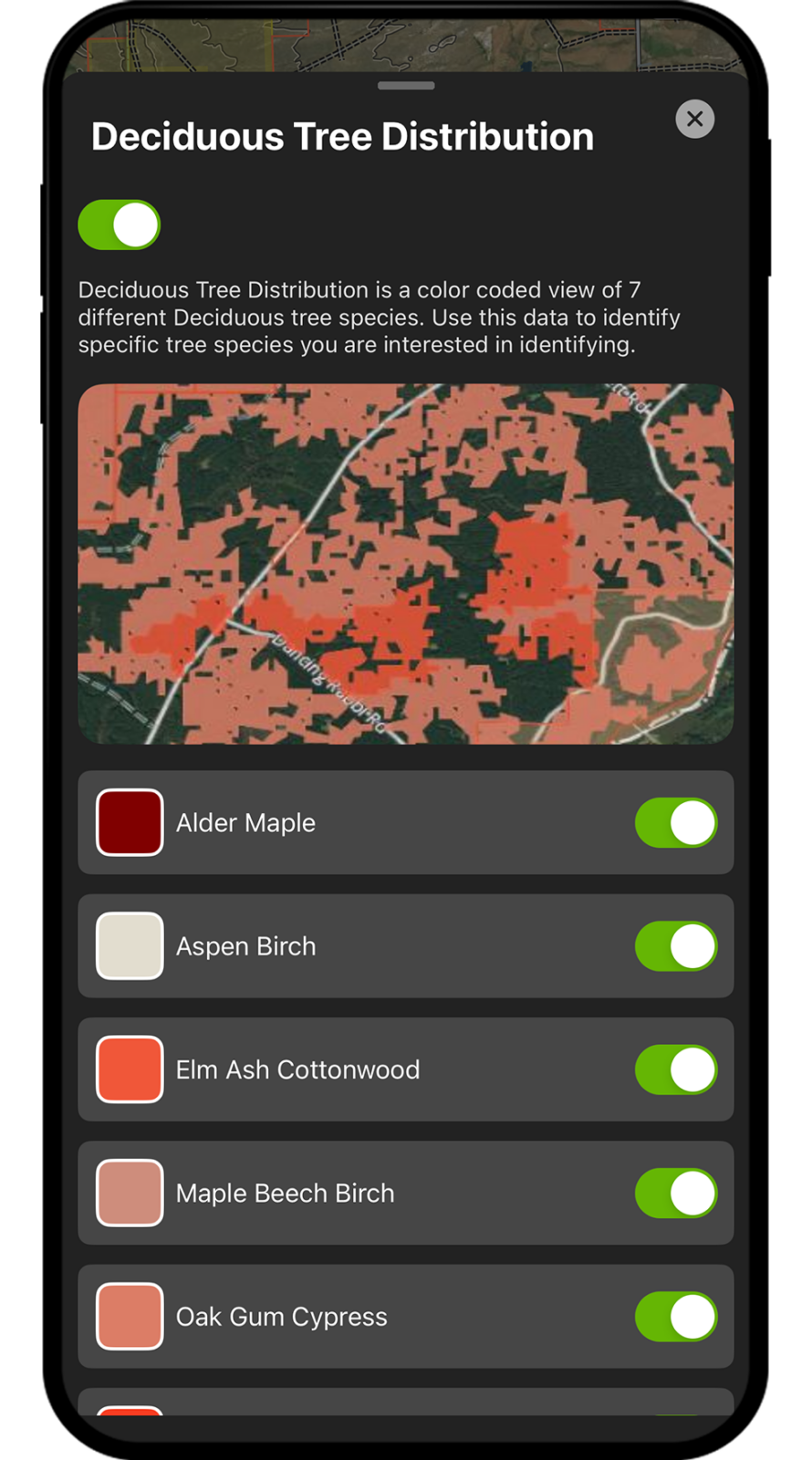
Deciduous Tree Distribution
Use this Layer to dive more deeply into the specific species and family of deciduous or hardwood trees on the map. If you want to find maple forests as a food source when leaves drop, or target oak forests to find mast-producing trees, you can view only those types of trees by going to Layer settings. Based on the species, time of year, and region you’re hunting, you may want to locate and scout for certain deciduous tree types to find your target species. For Squirrel hunters, knowing ahead of time that a particular ridge has an abundance of hickory trees is a late season game changer. Hickory nuts with their thick husk and hard shell often survive on the ground late into the winter. If you are like me, and not ready to hang up your rifle after deer season, turn on this layer, find a few big hickory trees, and take a kiddo on a fun hunt. You may also want to view where a forest transitions from one type of tree to another which can often cause a change in habitat structure and work to funnel animals through these zones.
The Deciduous Tree Distribution Layer has seven sublayers that can be turned on and off individually. These sublayers are in a red color scheme with subtle differences in the red tint for each layer. Sublayers include alder/maple forests, aspen/birch forests, elm/ash/cottonwood forests, maple/beech/birch forests, oak/gum/cypress forests, oak/hickory forests, and others.
